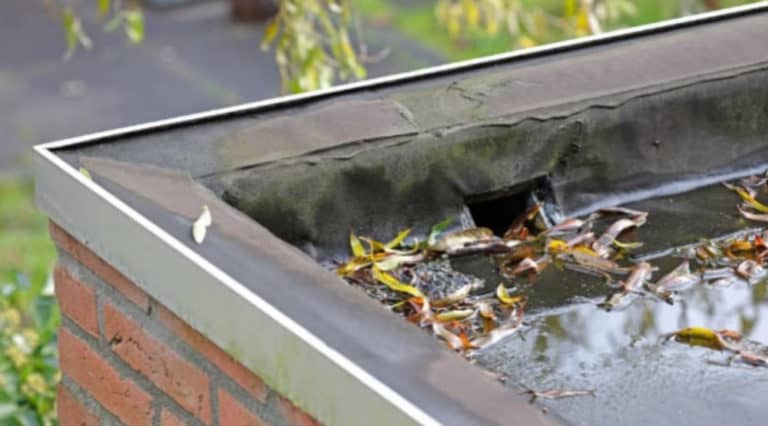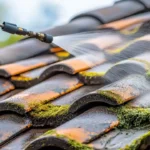In the world of industrial architecture, managing water effectively is crucial. Roof drainage solutions for industrial buildings are essential to ensure the longevity and safety of the structure. Industrial buildings face unique challenges, and effective drainage systems are vital to handle large volumes of rainwater.

Understanding the Importance of Roof Drainage
For industrial buildings, a good drainage system is not just a convenience; it’s a necessity. Without proper drainage, water can accumulate on the roof, leading to structural damage, leaks, and even roof collapse. This is why understanding roof drainage solutions for these types of buildings is crucial to prevent costly repairs and ensure safety.
The Challenges of Industrial Roof Drainage
Industrial buildings often have flat or low-slope roofs, making them more susceptible to water pooling. This can lead to issues such as leaks, structural damage, and mold growth. Furthermore, industrial buildings typically have larger roof surfaces, which collect more rainwater, increasing the demand for efficient drainage systems.
Types of Roof Drainage Systems
There are several types of drainage systems used in industrial buildings, each with its pros and cons:
1. Gutter Systems
Gutters are one of the most common types of drainage systems. They channel water away from the roof edge, directing it to downspouts and away from the building foundation. Gutters are cost-effective and easy to maintain, making them a popular choice for many industrial facilities.
2. Interior Drainage Systems
Interior drainage systems involve drains placed at various points on the roof, connected to pipes that carry water away through the building interior. These systems are effective in keeping water off the roof but require regular maintenance to prevent clogging.
3. Scupper Drains
Scuppers are openings placed on the edge of the roof that allow water to drain off. They are often used in combination with other drainage systems to provide extra water removal capacity.
Designing an Effective Roof Drainage System
Designing a suitable drainage system requires careful planning and consideration of various factors, including the size of the roof, the local climate, and the building’s design. Engaging a professional roofing contractor can help ensure that the system is tailored to the specific needs of the industrial building.
Factors to Consider
- Roof Size and Slope: Larger roofs require more drains to effectively remove water. The slope of the roof also affects how quickly water drains.
- Rainfall Intensity: Areas with higher rainfall require more robust drainage solutions to handle the increased water volume.
- Building Design: The building’s architecture can influence the type and placement of drainage systems.
Maintenance of Roof Drainage Systems
Regular maintenance is crucial to ensure the longevity and functionality of drainage systems. This includes regular inspections to check for clogs, leaks, and damage. Cleaning gutters and drains helps prevent water buildup and reduces the risk of overflows and subsequent damage.
Regular Inspections
Inspections should be carried out at least twice a year, ideally before and after the rainy season, to identify any issues that need addressing. This proactive approach helps prevent potential problems before they escalate.
Cleaning and Repairs
Regular cleaning of gutters and drains prevents debris buildup, which can cause blockages. Any signs of damage, such as cracks or rust, should be repaired promptly to maintain system efficiency.
Modern Innovations in Roof Drainage
Advancements in technology have led to the development of innovative drainage solutions that improve efficiency and reduce maintenance needs. Some of these innovations include:
1. Green Roof Systems
Green roofs incorporate vegetation to absorb rainwater, reduce runoff, and improve insulation. They are an eco-friendly option that also enhances the building’s aesthetic appeal.
2. Automated Monitoring Systems
These systems use sensors to monitor water levels and drainage performance, alerting maintenance teams to potential issues before they become serious problems.
Choosing the Right Drainage System
Selecting the appropriate drainage system depends on various factors, including budget, building design, and environmental considerations. Consulting with professionals can help ensure that the chosen system meets the specific needs of the industrial facility.
Professional Consultation
Engaging a professional contractor is essential to design and install an effective drainage system. They can provide expert advice on the best solutions and materials for the building’s specific requirements.
Conclusion
In conclusion, roof drainage solutions for industrial buildings are vital for protecting the structure from water damage. By understanding the different types of drainage systems, their benefits, and maintenance requirements, building owners can ensure the longevity and safety of their facilities.

FAQs
1. Why is roof drainage important for industrial buildings?
Roof drainage is crucial to prevent water accumulation, which can lead to structural damage, leaks, and even roof collapse.
2. What are the common types of roof drainage systems?
Common systems include gutter systems, interior drains, and scupper drains, each with unique benefits and considerations.
3. How often should roof drainage systems be maintained?
Regular maintenance, including inspections and cleaning, should be performed at least twice a year to ensure optimal performance.
For further insights, you can check out this external resource on roof drainage systems.
Unclogging roof drainage systems is also a critical aspect of maintenance that should be addressed promptly.
For more information on residential solutions, visit our guide on residential building drainage.
This article contains affiliate links. We may earn a commission at no extra cost to you.








